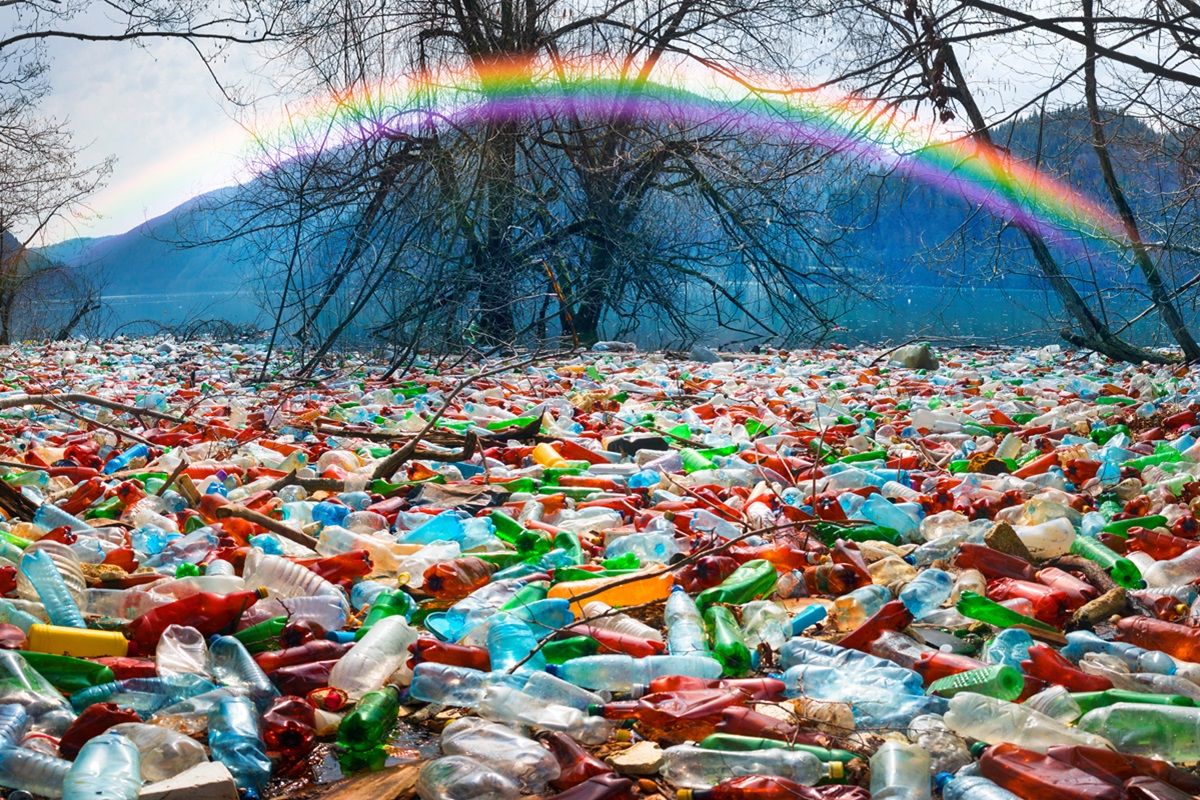I’ve been really obsessed about plastic lately. Growing up, plastic never seemed to be a huge threat – all you needed to do was recycle it, right? But it’s not so simple. And no one ever mentioned the most devastating fact about plastic use: the stuff deteriorates and sheds everywhere on a microscopic level. Even just the act of opening a plastic bottle of water sheds plastic debris that is invisible to the naked eye. There’s so much of it in the air now – scientists have even found plastic dust covering remote areas of our national parks.
Think about all the plasticware in your kitchen. Nobody ever warned me about the potential danger of applying heat and friction to plastic cutting boards, utensils, or Tupperware. I now know that anything wrapped in plastic is likely to leave behind traces of particles that could end up in your body. The worst part is that we likely already have close to a teaspoon of plastic in our brains.
We have all been told that recycling is the principal way to deal with this excess plastic, but it’s not so simple, and it never has been. The only plastics that are truly recyclable are those that can be mechanically recycled in closed-loop recycling methods – plastic with a homogenous chemical composition that can be broken down into pellets, remelted and formed into new plastics – thermoplastics like PET (polyethylene terephthalate). These tend to be lower quality with each regeneration. And still, most of it just ends up in landfills anyway.
The problem with heavier duty plastics like PVC (polyvinyl chloride) – also the most used and most toxic form of plastic – is that they are much harder to recycle because of their chemical composition. This type of plastic – used in vinyl records, camera film, flooring, furniture, and even clothing – contains phthalates and other plasticizers. These additives make it difficult to recycle, partly because heat causes the plastic to disintegrate, releasing toxic fumes of HCl (hydrochloric acid). And even though PVC contributes to microplastic pollution, it doesn’t get recycled because there’s no easy way to do it.
That doesn’t mean it’s impossible.
Enter electrochemistry. University of Michigan Chemistry Professor Anne McNeil already had equipment in the laboratory from studying batteries, which could be easily modified for the experiment. They wanted to consider what could be salvaged from PVC, and fortunately, since the plastic does contain hydrochloric acid, the chlorine could be extracted and refined for use in synthetic processes in different industries like pharmaceuticals. Then, the resulting “dechlorinated” PVC would be safer to put into landfills or potentially easier to recycle through mechanical means.
Using an electricin, which is a type of battery used in electrochemistry, the chlorine can be extracted from the PVC through a process of strategic combinations of reduction and oxidation reactions to break the chlorine free from the PVC and attach it to a substrate. This extraction technique is an example of open-loop recycling because it salvages part of the chemical composition of the source material so it can be reused.
By applying a current to the PVC between the anode and cathode of the electricin, chloride molecules in the PVC get kicked off – a mediator gets electrons from the battery’s cathode, allowing the chloride to migrate to the opposing anode. In simpler terms, the chlorine molecules can attach to the moving electrons, essentially transferring them from the PVC to the substrate.
So, it’s not impossible to recycle plastics that are heterogeneous and the chemistry team at University of Michigan has demonstrated a potential marketable solution to the problem. But the question of microplastic pollution remains. Fortunately, her team may have discovered a new filtering technique.
While working on an experiment to chemically repurpose rubber tires, a graduate student was disposing of adhesive material into a liquid waste container using a solvent. They noted that the liquid in the container was full of particulate matter, making the liquid dark and thick. Upon returning the next morning, they realized that the liquid had changed – now the water was clear, and the particulate matter had all clumped up into a glob.
The unique effect that the adhesive had on the plastic mixture could lead to technology in water treatment facilities as an additional prevention strategy for filtering microplastics, which can end up mixed in with wastewater sludge that is later sold as fertilizer in some cases.
These experiments demonstrate how chemical recycling is not only a viable solution for reducing waste and improving recycling methods, but also that the microplastic dilemma of our age is not a lost cause. Getting plastic out of the brain, however, is a different challenge.
Sources
The Microplastic Concerns Elevate—To the Brain
Twenty years of microplastic pollution research—what have we learned?
How Microplastics Get into Our Food | Scientific American
Research from University of Michigan
Using Adhesives to Capture Microplastics from Water | ACS ES&T Engineering
Stateside: Tuesday, Dec. 6, 2022: Interview with Anne McNeil and Danielle Fagnani
Read more
Researchers make a plastic that includes bacteria that can digest it - Ars Technica
Microbes can capture carbon and degrade plastic — why aren’t we using them more?
Can this revolutionary plastics-recycling plant help solve the pollution crisis?










